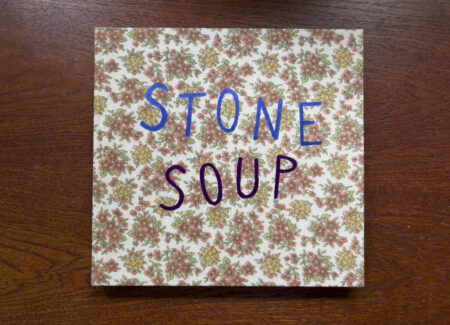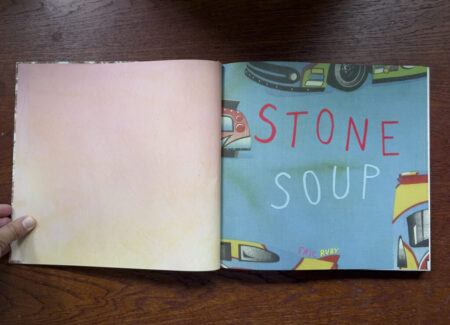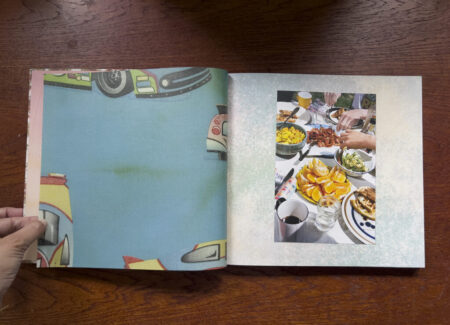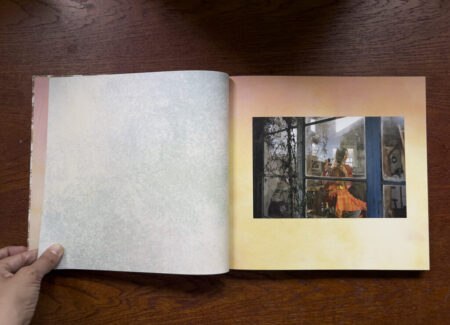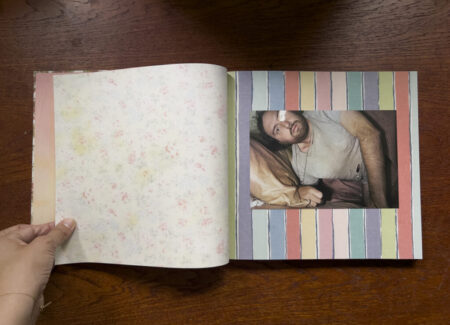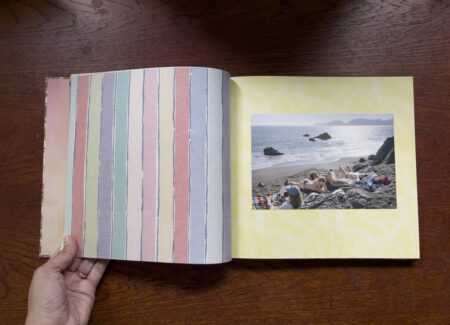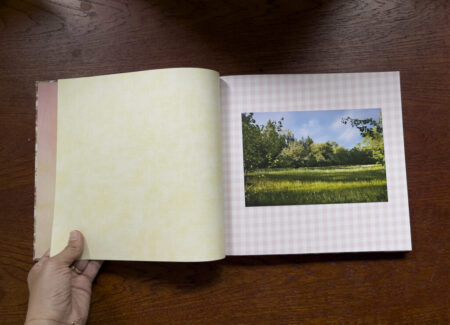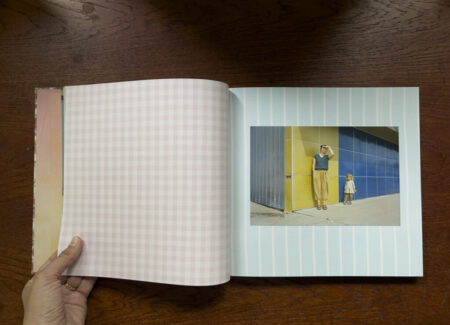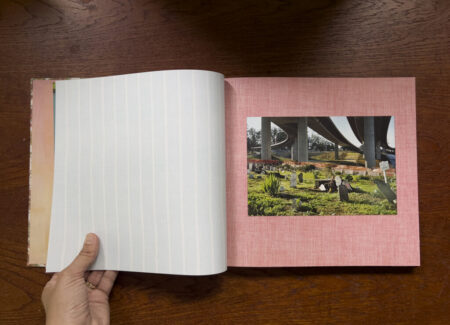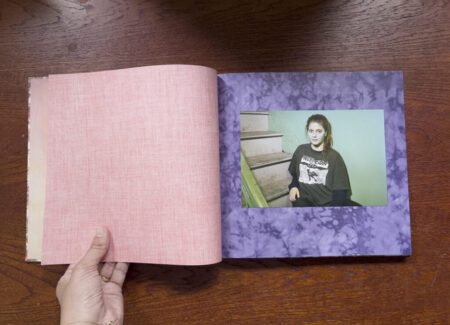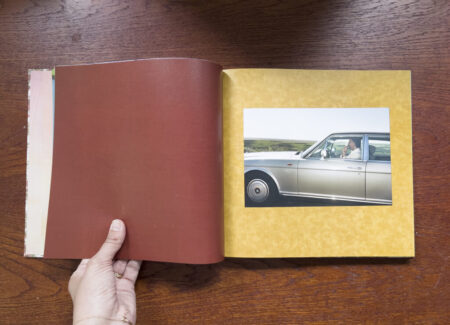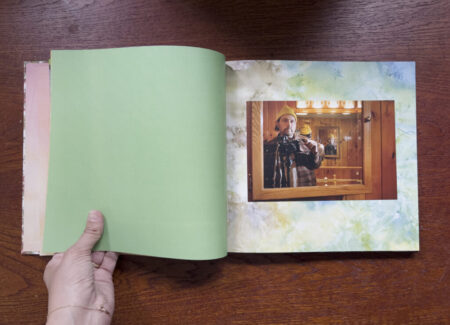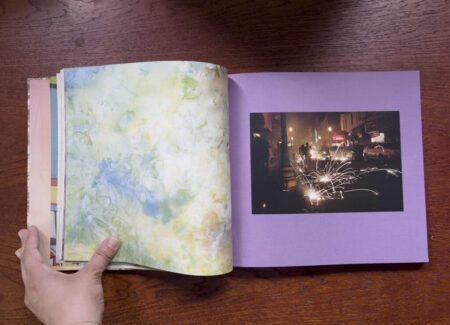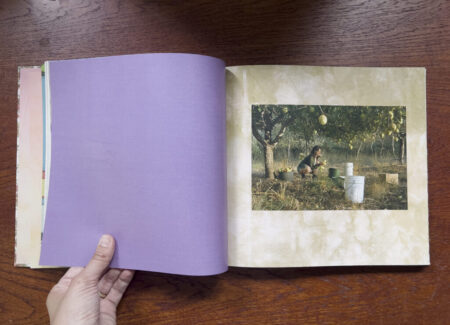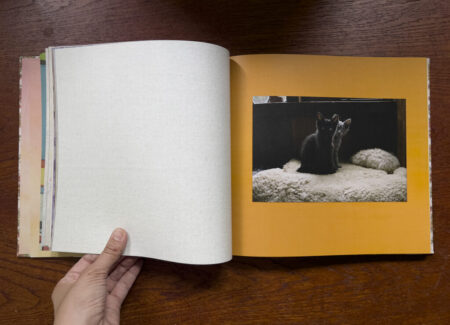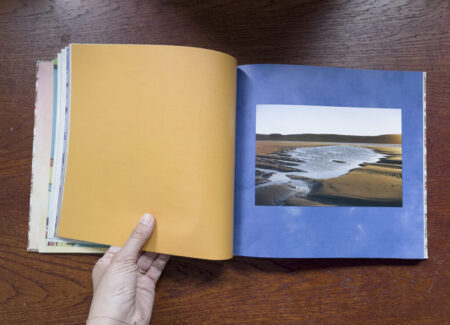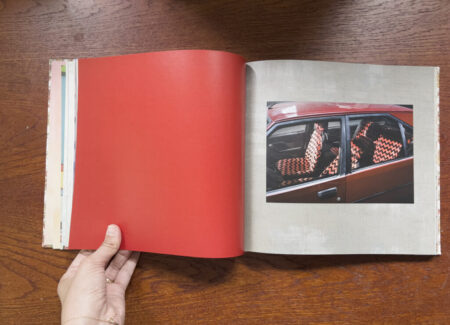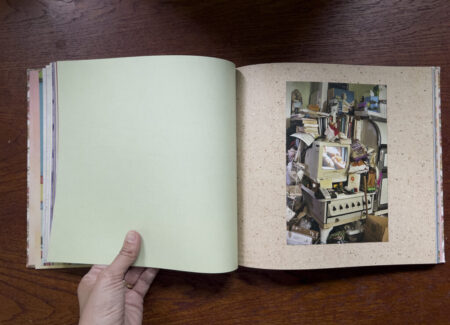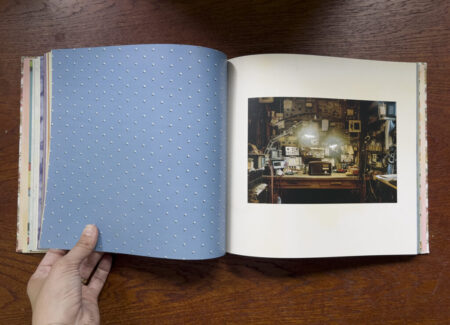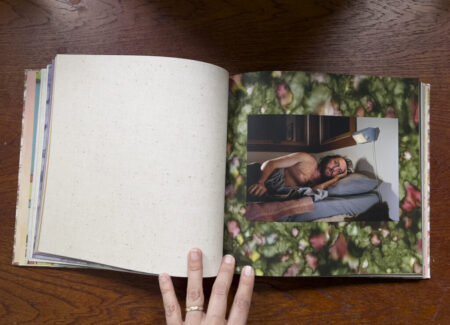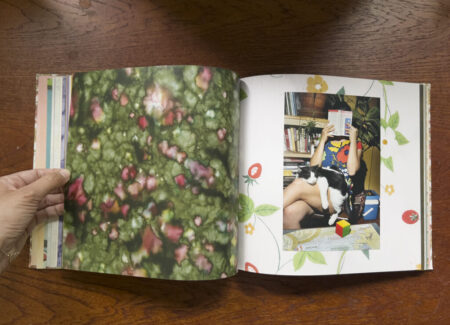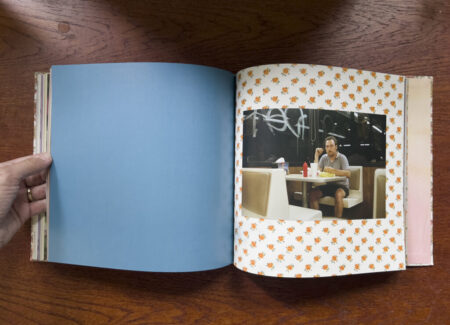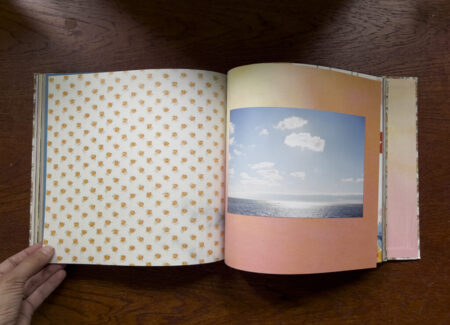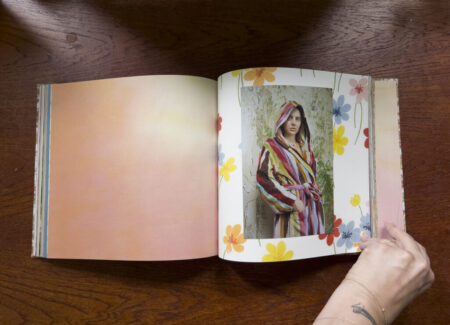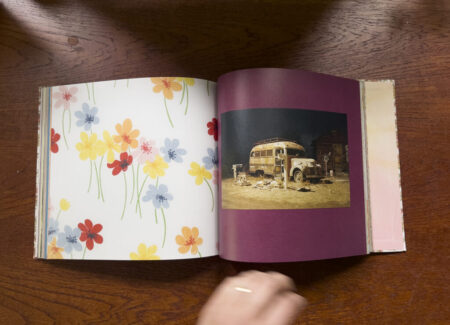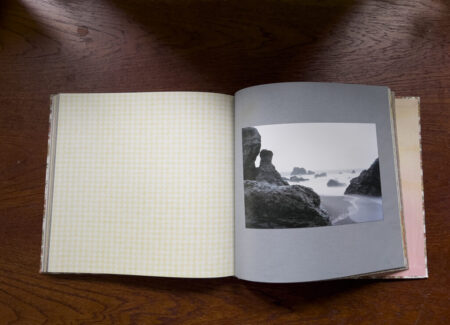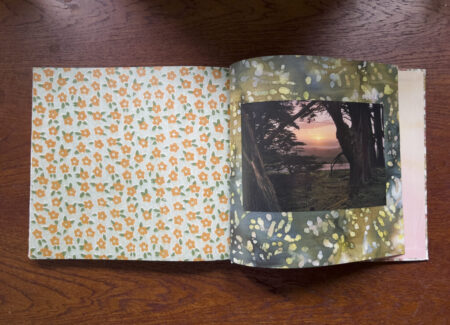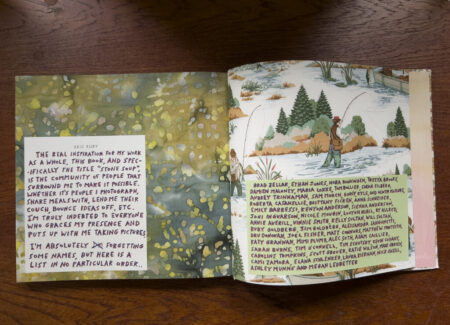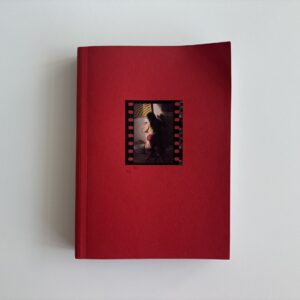JTF (just the facts): Published in 2025 by Nocturno Books (here). Hardcover (10.25 x 9.75 inches) with embossed lettering on the cover. 76 pages, with 70 photographs. There are no texts or essays included. In an edition of 1000 copies. (Cover and spread shots below.)
Comments/Context: In 2024, the Minneapolis-based writer Brad Zellar and photographer Ethan Aaro Jones joined forces to form the imprint Nocturno Books. This year they released their first three titles, among them Stone Soup, the debut monograph by the Minneapolis-based artist Eric Ruby.
Ruby’s creative philosophy, particularly evident in this photobook, is rooted in the concept of community. The title itself, Stone Soup, is a direct homage to the collaborative spirit, mirroring the classic folktale where a nourishing meal is created from seemingly nothing through the shared contributions of many. His profound connection to community extends beyond just the title, permeating his entire body of work, as he notes in his book’s dedication: “The real inspiration for my work as a whole…is the community of people that surround me to make it possible. Whether it’s people I photograph, share meals with, lend me their couch, bounce ideas off, etc.” The first image in the book is one of a communal meal with hands reaching onto a table that is abundant with a colorful array of nourishment.
The book features a diverse range of photographs, including still lifes, landscapes, environmental and animal portraits, action shots, street scenes, and food photography. This varied subject matter is unified by Ruby’s impeccable attention to lighting, which is meticulously observed, filled-in, and adjusted to achieve ultimate cohesion across the book.
Self-portraits of Ruby are sprinkled throughout the book. These glimpses are made in a diverse array of styles, each capturing a distinct facet of Ruby’s exploration of self. We see Ruby in front of the camera, a highlight eclipsing one of his two eyes, lending a sense of mystery and introspection to the gaze. Other images reveal the meticulous process behind the art, with Ruby positioned in front of a mirror, using a tripod and cable release, highlighting the intentionality and self-awareness inherent in the act of self-portraiture. Beyond the formal setups there are also moments that are more relaxed: Ruby laying down in bed at the end of the day, a vulnerable and candid depiction of exhaustion and reflection, or eating at a fast food joint, grounding the artist in everyday banality and showcasing the pervasive presence of art in all aspects of life. These self-portraits collectively perform one of the most powerful functions of photography: marking the inexorable passage of time. Each self-photograph becomes a temporal marker, a visual diary entry that chronicles a physical transformation as the viewer moves through the photobook.
The element of the book that electrified and surprised me most is its unexpected use of textiles. Rather than include the traditional white of the paper stock as the margins that surround each photograph, a swatch from Ruby’s personal fabric collection is scanned and put underneath each image. Much like the variety found in the book’s photographs, the book includes a tremendous range of these fabrics. The cover features a subtle floral pattern, while the title page is turquoise with small red, green, and yellow vehicles along its rectangular edges. This is followed by a diverse parade of patterns, including muted teal marbling, an orange-to-light-yellow fade, hand-painted vertical stripes, marbled yellow, pink gingham, various hand-dyed patterns, and on and on.
The design of the book is such that every image is placed on the right facing page, while the left facing page depicts the backside of the fabric that surrounded the image on the previous page. Some particularly memorable pairings include a red fabric swatch on the left page with a photograph of a red car featuring vibrant red and black zigzagging interiors; a soft orange next to an image of a woman in a terry cloth robe, gazing at the viewer against a large floral background; and on the acknowledgements spread, a natural dyed green, yellow, and pink fabric alongside a vintage textile depicting a fisherman in waders awaiting his catch. Each fabric seems to be a very careful and clever choice, complementing both its accompanying photograph and the preceding swatch.
With all these delightful textile colors and patterns, the challenge of making this book seems to have been especially tricky because it required not only the careful arrangement and sequencing of the images, which is normal for a photobook, but also necessitated the added attention to figure out how the images best worked with the textiles, and how all the textiles fit together in order. There are many really interesting and sophisticated color pairings between the images and textiles; sometimes direct echoes, sometimes pattern matching, sometimes contrasts between the color palette of the image and that of the surrounding pattern. Overall, the textiles add a consistent and marked note of personality and warmth.
Stone Soup is a beautifully produced photobook that stands out with its lyrical sequencing and its striking design. The innovative use of textiles in the layout creates an absorbing, mesmerizing, and calming backdrop to Ruby’s photographs—akin to discovering a friend’s fabric cupboard for the first time. The combination of photographs and fabrics conveys a powerfully engaged message of community, belonging, and self-perception, spanning time and geography. Bravo, Notcurno, on a magnificent debut.
Collector’s POV: Eric Ruby does not appear to have consistent gallery representation at this time. Collectors interested in following up should likely connect directly with the artist via his website (linked in the sidebar).
